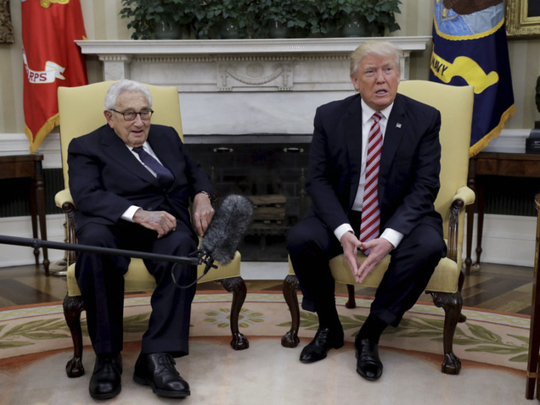
In January 1970, the then United States president Richard Nixon’s top aide, H.R. Haldeman urged him to hire the young media consultant Roger Ailes as his television adviser. Nixon — who was obsessively image-conscious even for a politician — would often complain that he needed someone to advise him on “how I should stand, where the cameras will be” and even whether to hold the phone “with my right hand or my left hand”. Now, Haldeman reported in a memo, “I think Ailes is probably the best man for the job.” He was hired, as a consultant, at $100 a day (about $650 or Dh2,391 today).
It was three years earlier that Ailes, the impresario of Fox News who died on Thursday at 77, had told Nixon on the set of The Mike Douglas Show, where he was a producer, that “television is not a gimmick”. During the 1968 campaign, Nixon began to rely on Ailes for advice on how to position the lighting and the lectern for his TV appearances, guidance on what clothes to wear and how to cut his hair, memos prescribing what his long-term media strategy should be and much more.
Ailes went on to help former US presidents Ronald Reagan, George H.W. Bush and countless other Republican politicians master the medium. But as significant as what Ailes taught Nixon is what Nixon taught Ailes: The political power of popular resentment against a liberal cultural elite.
Ever since his first race for Congress in 1946, Nixon had succeeded in politics by portraying himself as the voice of the “forgotten Americans”, the ordinary, hardworking Joes who were stifled by regulations and taxes imposed by Washington. He made it his mission to change the widespread reputation of the Republican Party as “the party of big business and privilege”. He did so over the years by mobilising popular rage against various figures of purportedly undeserved power and influence: Washington bureaucrats, college professors, Supreme Court justices, student protesters and, not least, the news media.
Ailes probably didn’t need Nixon to instruct him in the benefits of cultural populism; it grew out of his own experience growing up in Ohio, a sick child (he was frequently hospitalised for his haemophilia) in a working-class family. But Ailes’ political sensibilities were forged in the Nixon years, and in the following decades, he did as much as any figure to keep these ideas and approaches front and centre in Republican presidential campaigns.
Most notably, he was the driving force behind George H.W. Bush’s 1988 White House bid, focusing the campaign on two issues above all: Crime and patriotism. Governor Michael S. Dukakis of Massachusetts was transmogrified from an immigrant success story and consummate technocrat into a namby-pamby liberal who opposed the Pledge of Allegiance and succoured criminals like the murderer and rapist William Horton.
Ailes specialised in these sorts of issues, too, at Fox News. Individual issues would come and go — acid, amnesty and abortion in 1972, and immigration and political correctness in 2016 — but the attacks on liberals as elite, out of touch and protective of the “wrong people” came from the same playbook.
So, too, did the persistent denigration of the mainstream news media. Nixon’s antipathy for most of America’s national press corps had been visceral and calculated.
During the 1960s, moreover, many Americans came to believe that mainstream journalists were breaking from long-held norms of neutrality and letting their liberal views on issues such as civil rights and the Vietnam War creep into their reporting. In the 1968 campaign and especially as president, Nixon played upon this perception for political advantage.
In the 1990s, Ailes played on the same perception to achieve cable domination. It took considerable gumption for a long-time Republican with unabashedly right-wing political views to declare his news network “fair and balanced”, unlike the competition.
But this positioning was a pitch-perfect expression of his Nixonian cultural populism. It was this populism that, through the influence of Ailes and Fox News, helped propel the Republican Party to electoral success over the past 16 years.
Thanks in part to Ailes, Nixon, 45 years ago, had absorbed the lessons of television. More important, television has now fully absorbed the lessons of Nixon.
— New York Times News Service
David Greenberg is an American poet, songwriter, artist and art critic.








